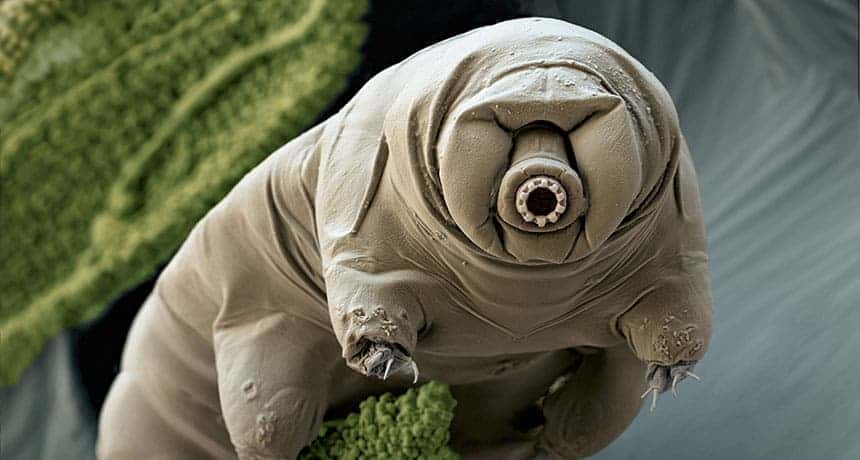
Despite their adorable appearance and microscopic size, tardigrades are some of the toughest creatures in the animal kingdom. They can survive without water for 10 years, in extreme pressures and temperatures, deadly UV radiation, and even in outer space. Even after they were frozen for 30 years, some thawed tardigrades were still alive and could even reproduce.
Now, scientists have pushed the limits of these extremophiles by shooting them out of a high-speed gas gun into an impact target. Remarkably, many survived — but only up to a point.
Although the experiment might sound cynical and random, there’s more to it than just proving how tough tardigrades are. One of the biggest questions in science is how life first appeared on this planet. One of the wildest theories suggests that microbes hitched a ride to our planet on meteorites and comets.
This theory of interplanetary transfer of life, known as panspermia, has never been proven but it is plausible enough that scientists have spent a considerable amount of time and funding to investigate it. For instance, researchers at Harvard and MIT teamed up with NASA to design and produce an instrument that can be sent to Mars and potentially detect DNA or more primitive RNA.
The topic was recently brought to scientists’ attention after Israel’s Beresheet probe crash landed on the moon in 2019, along with a cargo of tardigrades. The probe was obliterated, but some couldn’t help but wonder if the sturdy water bears made it out alive despite the rain of destruction.
Researchers at the University of Kent in the UK saw this as a challenge. They designed an experiment that would mimic the high-speed impact of a spacecraft by shooting the water bears as projectiles from a two-stage light gas gun. These guns are used by researchers to test the effects of high-velocity impacts, such as the effects of space debris impacting a satellite. As such, they can fire projectiles at much higher velocities than a normal gun that shoots bullets.
Tardigrades usually live for only a few months when fully active. But when short on water, they may curl up in a ball, entering the so-called “tun” state, named because it looks like a large barrel called a tun. By freezing the water bears, the researchers were able to activate the tun state — they were now ready to be fired like tiny cannonballs.
Six shots were fired onto a sand target, each shot containing a few frozen water bears with speeds ranging from 1,240 to 2,230 miles per hour. The water bears impacted the target at shock pressures between 0.61 and 1.31 GPa (gigapascals).
The tardigrades remarkably survived some of these impacts, up to velocities of 1,845 miles per hour (900 meters/second) and 1.14 GPa of pressure upon impact. More than that killed the tiny creatures. But even those that survived seem to have sustained internal damage since they took longer to thaw and recover than their counterparts that just sat in the lab’s freezer. It’s not yet clear if these battered tardigrades can reproduce.
If the Beresheet probe crashed into the moon at more than 1,845 miles per hour, then there are likely no more water bears left there. Likewise, most meteorites impact Earth at much higher velocities and shock pressures than measured by this experiment.
However, panspermia isn’t entirely down for the count. The researchers claim that up to 40% of the rock and debris that were shot into space by asteroid impacts in Earth’s early history billions of years ago would have reached the moon’s surface at speeds low enough for tardigrades to survive. Likewise, a similar journey could have been made between Mars and its moon Phobos.
Rather than debunking panspermia, these new findings serve to offer a potential upper bound for the kind of impacts life may survive. They could also prove useful in missions to Saturn’s Enceladus or Jupiter’s Europa, both icy moons that bear subsurface oceans. Although these oceans are obscured by ice dozens of miles thick, material from deep beneath the ice is ejected into space by huge plumes of water. A spacecraft flying through these sprinklers would have to collect samples at a speed much slower than the impact survival limit of tardigrades to ensure that any organisms, if any, survive the process.
The findings appeared in the journal Astrobiology.



